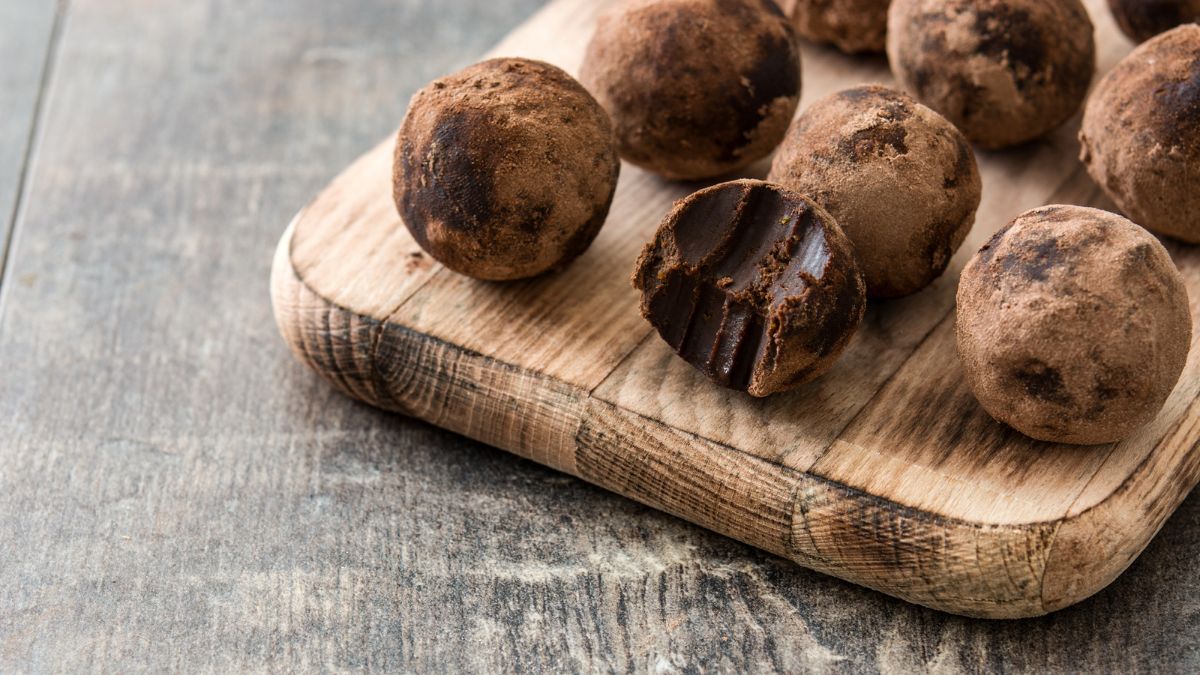What Is a Mignardise? [With Examples]

Ever wonder why you’ll always have some small sweet pastries with coffee when you go to a fancy restaurant? They are not a dessert because they came after dessert. Then what are those? Those little heavenly-made sweet things are called mignardises and are, normally, a way for the chef to display his/her superior pastry skills. In short, what is the definition of Mignardise?
A Mignardise is a bite-size dessert normally served at the end of a special meal with coffee, tea, or digestives. Chocolate truffles, miniature tarts and cakes are just some of the examples of mignardises.
Having its origins in the cooling down ovens of French bakeries, Mignardise’s presence is, undeniably, something we are used to at the end of every high-end restaurant meal. Or should I say anxiously expecting instead?
What Exactly Is a Mignardise?
In some places known as petit-fours, a mignardise is a small dessert, bite-sized, that doesn’t require any utensils to be eaten. Saved for special occasions or fancy restaurants, a mignardise is not something you’ll find in a regular 3-course meal. Served with coffee, tea, or digestives, any miniature sweet can be called a mignardise after dessert.
Possibilities are endless; for an item to be considered eligible for this sweet assortment, it only has to be a tiny bite-sized one. Read on to find some examples of Mignardise.
What Are Some Examples of Mignardise?
They are small enough so that they won’t make you forget the rest of the meal, but delicious enough so that you’ll remember it forever.
Chocolate Truffles or Small Pieces of Chocolate
Made with fine chocolate and heavy cream with a ganache filling, Chocolate truffles are a delicacy known by many. The best way to appreciate a chocolate truffle is to bite half of it and let it melt between your tongue and the roof of your mouth. Probably the most common of Mignardise, these little decadent tiny balls will certainly leave a lasting flavor in your mouth.
Also very common, some restaurants bring a small assortment of small chocolate pieces to the table that can be enjoyed with your coffee or tea.

Miniature Tarts and Cakes
It can be considered a mignardise if you can make a tart or a cake in miniature size. Mini chocolate madeleines with a salted caramel filling and a dark chocolate drizzle or bite-sized merengued lemon tarts are just two examples of endless possibilities.
If putting together a miniature cake that you can eat in one bite is not the best way to showcase a pastry chef’s ability, then I don’t know what is.
Candied Fruit and Pralines
Candied, crystalized or glace fruit are all the same. These describe placing whole fruits (like a grape or a strawberry) or fruit pieces (like orange edges or banana slices) in heated sugar syrup. Extremely sweet, these one-bite treats will surely give your brain a happy ending feeling after a good meal.
But not only fresh fruit can be candied. Dried fruits, like almonds or peanuts, can also be coated in sugar. Perfect to go with coffee; these little things are called pralines.

Small Cookies and Macarons
By this time, you already know that anything sweet that can go in your mouth in one go can be considered a mignardise. So can cookies. A classic in many restaurants, cookies or biscotti perfectly complements your coffee or tea.
Also, in the cookies category, macarons, the French delicacies, are becoming, more and more, something that pastry chefs serve at the end of the meal. Coming in many colors and flavors, their crunchy exterior and soft filling make macarons so distinguished.
Individual Meringue or Pavlovas
Dry, crisp, and crunchy on the outside, meringues are known for their gooey and soft interior. You can either eat them on their own or create little meringue nests filled with jams, fruit, or whipped cream, for ultimate decadence.
If you want to know how to prepare world-class miniature desserts, “Just a Bite” is a pastry chef Gale Gand’s book. In this book, available on Amazon, you’ll find 125 recipes of mignardises, including her famous Banana Brûlée Spoonfuls, Mini Granita Watermelons, Nortons with Peanut Butter Cookies, Grape Jelly Ice Cream, or Butterfly Cupcakes. With easy-to-follow recipes, you don’t need to be a pastry expert in preparing these delicious mignardises. I’m sure you’ll thank me for the tip the next time you surprise your friends with an after-dinner bite-size treat.

What Is the Difference Between Dessert and Mignardise?
A dessert is a sweet course served at the end of the meal, while a mignardise is a small bite-sized sweet item you serve after dessert, normally with coffee, tea, port, brandy, or scotch.
A dessert can be a cake or tart slice, a fruit platter, an ice cream, or a pudding, among others. A mignardise, however, must be a very small and delicate item that won’t need any cutlery to eat. For example, a small slice of cake cannot be considered a mignardise because you cannot eat it in one bite or without a fork. The same thing happens for a miniature pot of chocolate mousse.
You’ll find a dessert at most restaurants, but mignardises are saved for fancier and more complete meals. Normally, a mignardise will be only found on a 7-course meal and above.
What Is the Difference Between Friandise and Mignardise?
The answer is: there is none. Friandise is another term to call a Mignardise. From the French, a Friandise is a treat, and it can be used instead of Mignardise to describe a small item served at the end of a meal.
What’s the Story Behind Mignardise?
It is impossible to place when the word Mignardise (or the concept) first appeared. Many believe mignardises were first introduced in France in the 18th century. Back then, bakeries used big wood-fired brick ovens to bake their bread. Once all bread for the day was produced, bakers would take advantage of the residual heat of the colling-down ovens to bake small treats. They called these treats “petit four,” which translates to “small oven”.
Today the process of making these petit fours, or Mignardise, is different, and they require incredible technique from the pastry chefs who prepare them. Seen as a parting gift from the kitchen, these miniature sweets are, today, a way for chefs to create a final impression for their diners. At the same time, a “thank you for coming” and a “please remember to come back”.
Mignardise is, indeed, a great finale for a great meal.
